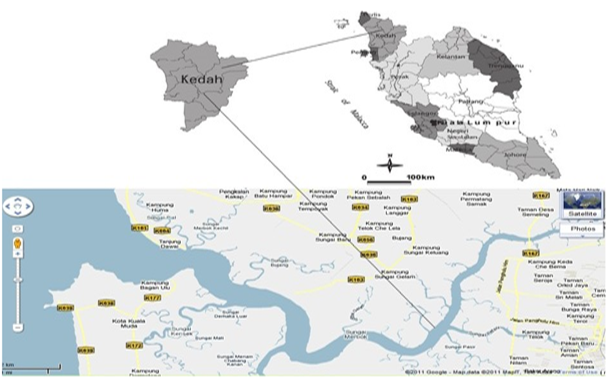Abstract
Scylla olivacea is the most prevalent edible mud crab species in Peninsular Malaysia. However, mud crab can accumulate high contaminations from the surrounding environment resulting in health risk to consumers. Thus, this study was conducted to determine the selected heavy metal accumulative concentrations in Scylla olivacea from Sungai Merbok, Kedah. Adult crab samples were collected every three months for one year (August 2017, November 2017, February 2018 and May 2018) from selected areas in Sungai Merbok, Kedah. The heavy metal accumulation levels in the crab tissues were determined using Inductively Coupled Plasma Mass Spectrometry (ICP-MS). The concentration of heavy metals ranged from 0 to 4.81 ppm for Chromium (Cr), 0 to 0.49 ppm for Manganese (Mn), 0 to 8.3 ppm for Iron (Fe), 0 to 0.33 ppm for Nickle (Ni), 3.2 to 66.07 ppm for Zinc (Zn), 0.33 to 2.55 ppm for Arsenic (As), 0.11 to 0.77 ppm for Lead (Pb), and below the detectable limit for cadmium (Cd). The mean concentration of Cr, Fe and as were 1.52 ± 2.26 ppm, 2.09 ± 4.14 ppm and 1.68 ± 0.95 ppm respectively, slightly higher than the maximum permissible limits set by Joint Food and Agriculture Organization/World Health Organization Expert Committee on Food Additives (JECFA) and Malaysian Food Regulation. This study indicated that the accumulation of Cr, Fe and as was high in the edible tissues of Scylla olivacea from Sungai Merbok, Kedah, which can trigger adverse effects on consumer's health. Hence, a detailed investigation needs to be addressed to determine the pollution status in crabs inhabiting along the Sungai Merbok waters.
Full text article
Authors

This work is licensed under a Creative Commons Attribution-NonCommercial-NoDerivatives 4.0 International License.

